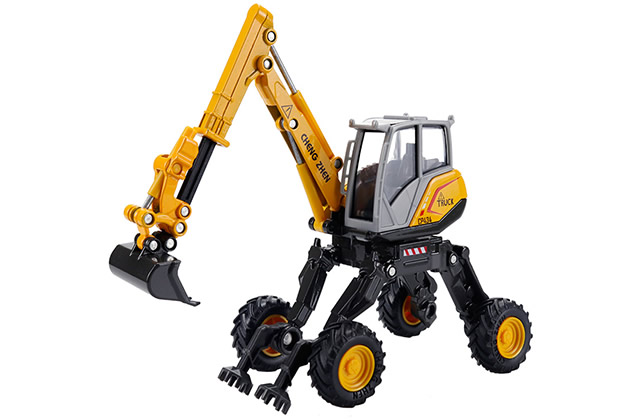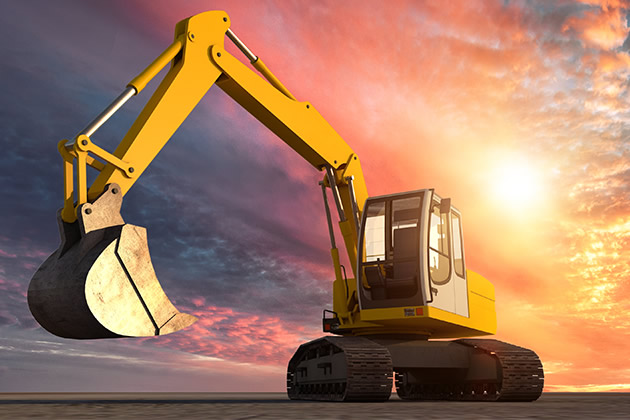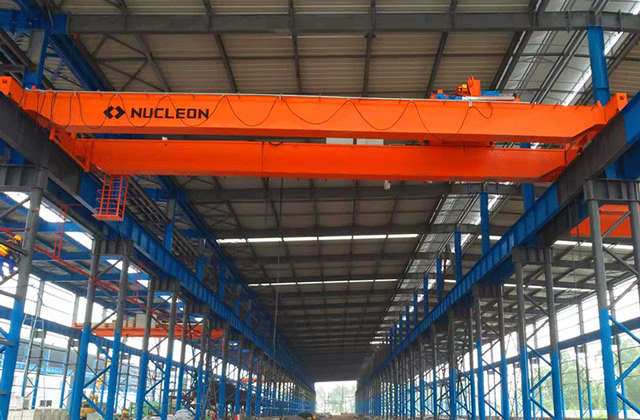[Cartridge dust collector] The working principle of the cartridge dust collector The dust removal process of the cartridge dust collector
The cartridge dust collector is based on The filter cartridge is composed of a filter element or a dust collector using pulse injection. Cartridge dust collectors can be divided into oblique plug-in type, side-mounted type, ceiling-mounted type and top-mounted type according to the installation method. Cartridge dust collectors are divided according to the material of the filter cartridge, and can be divided into long fiber polyester cartridge dust collectors, composite fiber cartridge dust collectors, anti-static cartridge dust collectors, flame retardant cartridge dust collectors, and film-coated cartridge dust collectors. Nano filter cartridge dust collector, etc.
Introduction to cartridge dust collectors
Cartridge dust collectors have been around since the 20thcenturyIt has appeared in Japan and some European and American countries in the 1970s. It has the advantages of small size, high efficiency, low investment, and easy maintenance. However, due to its small equipment capacity, it is difficult to assemble Large air volume equipment has low filtration wind speed and narrow application range. It is only used in grain, welding and other industries, so it has not been widely promoted for many years. In recent years, with the continuous development of new technologies and new materials, companies represented by Japan and the United States have improved the structure and filter materials of dust collectors, making cartridge dust collectors widely used in cement, steel, electricity, In industrial fields such as food, metallurgy, and chemicals, the overall capacity has increased several times, becoming a large dust collector with a filtration area of >2000m2 (GB6719 -86 category) is a solution for traditional dust collectors that have difficulties in collecting ultrafine dust, high filtration wind speed, poor dust cleaning effect, and easy wear and tear of filter bags. The best solution with high operating costs. Compared with various bag-type and electrostatic precipitators currently on the market, it has the characteristics of large effective filtration area, low pressure difference, low emissions, small size, and long service life. It has become the development of industrial dust collectors. new direction.
The structure of the cartridge dust collector
The structure of the cartridge dust collector is composed of an air inlet duct, an exhaust duct, and a box. It is composed of a body, an ash hopper, a dust cleaning device, a diversion device, an air flow diversion distribution plate, a filter cartridge and an electronic control device. It is similar to the air box pulse bag dust removal structure.
The arrangement of the filter cartridge in the dust collector is very important. It can be arranged vertically on the box panel or obliquely on the panel. From the perspective of dust cleaning effect, the vertical arrangement is more reasonable. The lower part of the flower board is the filter chamber, and the upper part is the air box pulse chamber. An airflow distribution plate is installed at the inlet of the dust collector.
The working principle of the cylinder dust collector
After the dust-containing gas enters the hopper of the dust collector, the air flow section suddenly expands.Due to the action of the airflow distribution plate, a part of the coarse particles in the airflow settle in the ash hopper under the action of dynamic and inertial forces; after the fine-grained and low-density dust particles enter the dust filter chamber, the dust is deposited in the dust hopper through Brownian diffusion and sieving combined effects. On the surface of the filter material, the purified gas enters the clean air chamber and is discharged from the exhaust pipe through the fan.
The resistance of the cartridge dust collector increases with the increase in the thickness of the dust layer on the surface of the filter material. Cleaning is performed when the resistance reaches a certain specified value. At this time, the PLC program controls the opening and closing of the pulse valve. First, the poppet valve in the first chamber is closed to cut off the filtered air flow. Then the electromagnetic pulse valve is opened, and the compressed air flows rapidly in the upper box in a short time. It expands and pours into the filter cartridge, causing the filter cartridge to expand, deform and vibrate. Under the action of reverse air flow, the dust attached to the outer surface of the filter bag is peeled off and falls into the ash hopper. After the dust cleaning is completed, the electromagnetic pulse valve is closed, the lift valve is opened, and the chamber returns to the filtering state. Each room is cleaned in sequence, and a cleaning cycle starts from the first room to the next time. The fallen dust falls into the ash hopper and is discharged through the ash discharge valve.
During this process, the filter cartridge must be replaced and cleaned regularly to ensure the filtration effect and accuracy, because during the filtration process, in addition to being blocked, part of the dust will be deposited on the filter material. surface, increasing resistance, so the general correct replacement time is three to five months!
Technical improvement measures and technology selection
4.1Dust cleaning device
The traditional filter cartridge dust collector has two cleaning methods, one is high-pressure air flow back blowing, and the other is pulse air flow injection. Practice shows that the advantage of the former is uniform air flow, but the disadvantage is consumption. Large air volume; the advantage of the latter is small air consumption, but the disadvantage is weak air flow. To this end, two improvements can be made: on the one hand, add a flow guide device to the pulse blow pipe to strengthen the air flow induction effect; on the other hand, cancel the guide air duct on the upper part of the filter cartridge so that the pulse air flow and the induced air flow can fully enter the filter cartridge at the same time. . After this improvement, the air consumption is less, the air flow is uniform, and the dust cleaning effect is good. According to calculations, the dust cleaning air flow after the technical improvement is 3–5 of the pulse air volume. times.
4.2Air volume distribution plate
Air flow distribution of cartridge dust collector It is very important to consider how to avoid areas of high wear on the filter material due to high wind speeds at the inlet of the equipment. The air flow distribution plate has unique requirements when used in cartridge dust collectors. The air flow distribution must be very stable and uniform. It is conducive to the rise of air flow and the fall of dust. The opening rate of air flow distribution plate35%. According to the calculation, the resistance coefficient <2, it can be seen that under the condition of air flow speed <0.8m/s , the porous airflow distribution plate can meet the requirements of cartridge dust collector.
Dust removal process
1、Capture and separation process
①Capture and transfer stage. The essence is the concentration stage of dust. The dust uniformly mixed or suspended in the carrier medium enters the dust removal space of the dust collector. Due to the action of external force, the dust is pushed to the separation interface. As the dust moves to the separation interface, the concentration becomes larger and larger, preparing for further solid-gas separation.
②Separation stage. When a high-concentration dust flow flows to the separation interface, there are two action mechanisms: First, the ability of the carrier medium to carry dust gradually reaches the limit state. In terms of dust suspension and sedimentation trends, sedimentation is the main force, and through dust sedimentation, the Secondly, in high-concentration dust flow, the diffusion and agglomeration tendency of dust particles are mainly agglomeration. The particles can agglomerate with each other or agglomerate and adsorb on the substantial interface.
2. Dust removal process
After passing through the separation interface, the separated dust passes through The process of dust discharge from the dust outlet.
3、Exhaust process
The relatively purified air flow after dust removal is from the exhaust The process of discharge from the port
6Standards for cartridge dust collectors
2002 Mechanical Industry Standard of the People’s Republic of China: Cartridge Dust Collector StandardJB/T10341-2002
Characteristics of Cartridge Dust Collector
① Since the filter material is pleated into a cylinder, the density of the filter material is high, so the dust collector has a compact structure and small volume;
② The filter cartridge has a small height and is easy to install. The workload of use and maintenance is small;
③The filtering area of the dust collector of the same volume is relatively large, the filtration wind speed is small, and the resistance is not large;
④The pleats of the filter material require strict sealing at both ends , there should be no air leakage, otherwise the effect will be reduced.
The characteristics of the pulse filter cartridge dust collector are as follows:
1. The filter cartridge uses imported polyester fiber as the filter material, with a layer of sub-micron ultra-thin fiber adhered to it. On ordinary filter media, and the fibers on the adhesion layer are arranged very closely, extremely small mesh holes can block most sub-micron dust particles on the surface of the filter media;
2. The pleated filter material can increase the filtering area and make the dust collector more compact;
3. The filter cartridge height is small and easy to install. The maintenance workload is small;
4. Compared with dust collectors of the same volume, the filtration area is relatively large, the filtration wind speed is small, and the resistance is not large;
5. The single-machine dust collector adopts pulse injection online dust cleaning method. The dust cleaning process is automatically controlled by a pulse controller. Multiple filter cartridges are installed in the dust collector to increase its effective filtration area. When a certain (pair) filter cartridge meets the dust cleaning setting requirements, the injection device is started to clean the dust, and the other filter cartridges work normally, so that both The dust cleaning effect does not affect the operation of the equipment, so that the dust collector can operate continuously; the combined dust collector adopts separate chamber offline pulse automatic cycle dust cleaning. Multiple filter cartridges are installed in each dust removal room to increase its effective filtration area. When the filter cartridge in a dust removal room meets the dust cleaning setting requirements, the injection device is started to clean the dust, and other dust removal rooms work normally. This ensures The dust cleaning effect also enables the dust collector to operate continuously;
6 and high dust removal efficiency (generally up to 99.6%Above), easy to operate;
Main performance indicators
The pulse airflow is directly injected into the filter cartridge without passing through the venturi. This will cause the end (upper part) of the filter cartridge close to the pulse valve to bear negative pressure, while the other end (lower part) of the filter cartridge will bear pressure, as shown in Figure 6-29. This will cause the upper and lower parts of the filter cartridge to be cleaned differently, which may shorten the service life and make the equipment unable to achieve effective dust cleaning.
For this purpose, a Venturi nozzle for the filter cartridge can be installed on the pulse valve outlet or pulse injection pipe. Improve the distribution of injection pressure to a relatively uniform high positive pressure injection of the entire filter cartridge.
Dust accumulated in the folding seams of the filter cartridge will make cleaning difficult. Therefore, filter cartridges with large folding areas (each filter cartridge has a filtration area of 20~22m2) are generally only suitable for applications with lower inlet concentrations. Compare commonly used filter cartridge sizes and filtration areas.
The air distribution box of the pulse injection device of the filter cartridge dust collector should comply with JB/T 10191-2000 regulations. Clean airflow should be free of water, oil and dust. Under the specified conditions of the pulse valve, the injection valve and the interface should have no air leakage, can open and close normally, and work reliably.
The pulse controller should work accurately and reliably, and its injection time and interval can be adjusted within a certain range. When the induced blowing device is installed in conjunction with the blowing pipe. The nozzle of the induced blowing device should be coaxial with the nozzle hole on the blow pipe, and maintain a consistent verticality with the nozzle, and the deviation should be less than 2mm.
Cartridge dust collector filter cartridge and filter material
Filter cartridge
The filter element of the cartridge dust collector is the cartridge. The structure of the filter cartridge is divided into four parts: top cover, metal frame, pleated filter material and base. The filter cartridges composed of these four parts include round, flat and conical shapes.
The filter cartridge is made of filter material of the designed length folded into pleats and glued end to end to form a cartridge. The inside and outside of the cartridge are supported by a metal frame, and the top and bottom are fixed with a top cover and a base. The top cover has fixing bolts and washers. The shape of round filter cartridge and flat filter cartridge.
The upper and lower end caps of the filter cartridge and the protective mesh should be reliably bonded, and there should be no defects such as degumming, leakage, or sagging; the metal parts on the filter cartridge should meet rust-proof requirements; the outer surface of the filter cartridge should The surface should be free of obvious scratches, bumps, naps, burrs and other defects; the filter cartridge can be equipped with injection devices such as induction nozzles or venturi tubes as needed to clean the filter cartridge. A protective net should be added to the inside of the filter cartridge. D≥320mm, H≥1200mm filter cartridge should be equipped with an induction nozzle.
Commonly used filter cartridges are divided into three categories. The table shows the different protection objects and installation locations of different air filter cartridges
The volume of the finished filter cartridge has a great relationship with the volume of the filter assembly. Hosts that use filter assemblies often put forward the following requirements for filters: ① the total height of the dust collector and the distance (width) between inlet and outlet; ② the total height and diameter of the lower body of the filter cartridge; ③ the total mass of the filter cartridge; ④ the outlet connection method and Size; ⑤Filtering accuracy and a series of performance requirements related to filtration characteristics.
The following factors should be paid attention to when designing the filter cartridge according to the assembly requirements
(l)The outer diameter of the filter cartridge is larger than the inner diameter of the filter cartridge10mm or above is appropriate. This is because the high and narrow space allows pollution particles to slowly settle on the outer layer of the filter cartridge, so that the filter cartridge can evenly accept pollution and blockage from top to bottom.
(2) The main consideration in determining the diameter of the inner skeleton is that the size of the oil-passing holes should not affect the filtered air volume, and at the same time, the impact of the size of the holes on the strength of the skeleton should be taken into consideration.
(3)The total strength of the inner skeleton is extremely important. First of all, the pressure difference that the filter cartridge must bear must be considered and supported by the skeleton, so the smaller the diameter, the higher the strength.
(4)The height of the fold teeth should be optimal between l0~50mm.
(5)Leave sufficient room for the pressure difference limit. After calculating the required filtration area, the area should be increased11 span> times. This is because dust pollutants are unpredictable in actual work.
Filter material
There are two types of filter materials for filter cartridges: one is synthetic fiber filter material, and the other is paper filter material. material.
Synthetic fiber nonwoven filter material. According to the processing technology, it can be divided into two categories: continuous fiber spunbond polyester hot pressing and short fiber spunbond polyester hot pressing. When the surface of the filter material is waterproofed, the wettability angle of the filter material after waterproofing treatment should be greater than 90°, and the water level should not be lower than level IV. When the filter material is treated with oil-proof treatment, the filter material should be treated with oil-proof treatment. Polyester nonwoven filter material can withstand working temperatures not lower than 120℃. For other special working conditions such as high temperature and humidity, the selection of filter cartridge material structure should meet the application requirements.
Paper filter materials can be divided into two categories: low air permeability and high air permeability.
There are also synthetic fiber non-woven PTFE coated filter media and paper PTFE coated filter media.
Top Ten Vacuum Cleaner Brands>>
If the website content violates your rights, please contact us to delete it。








